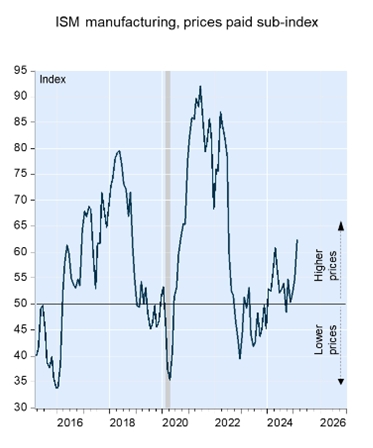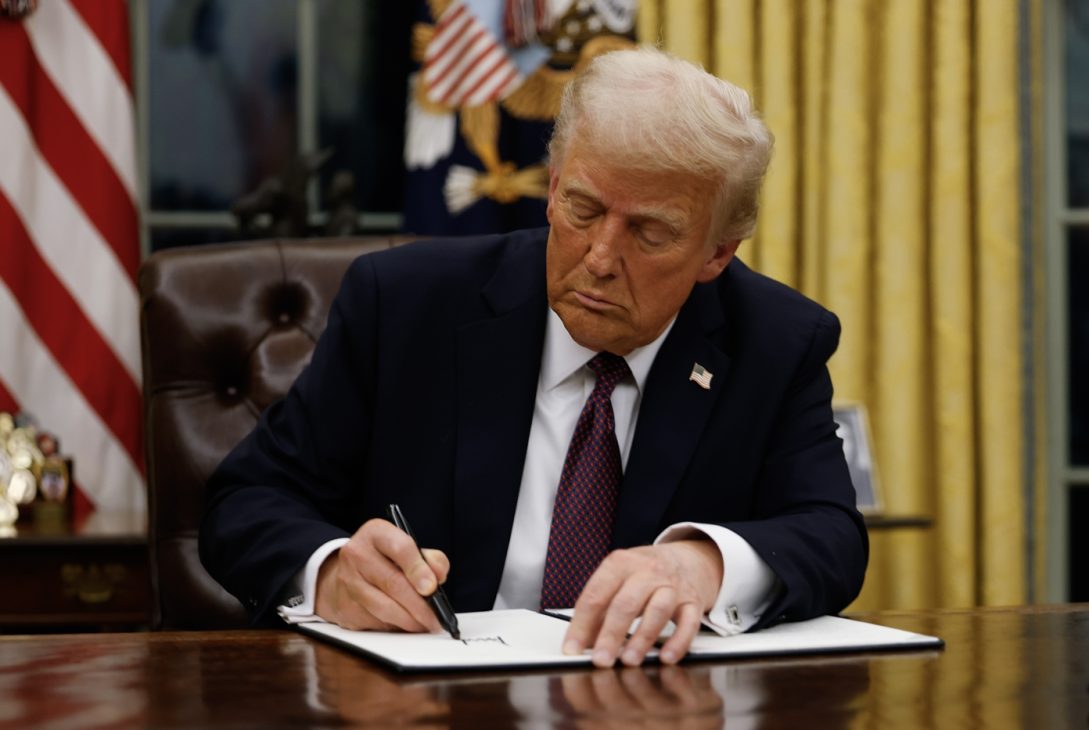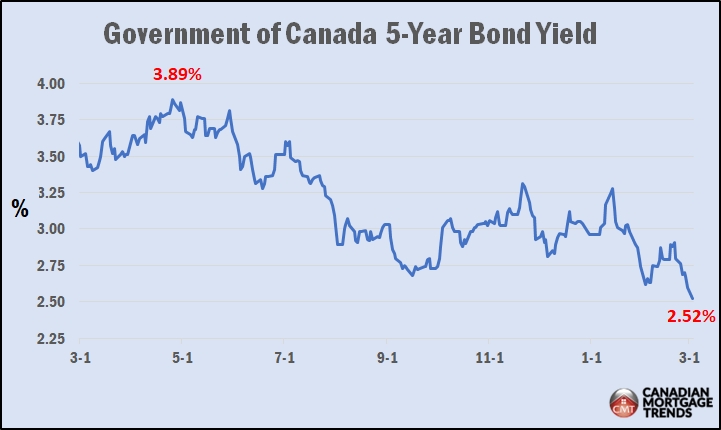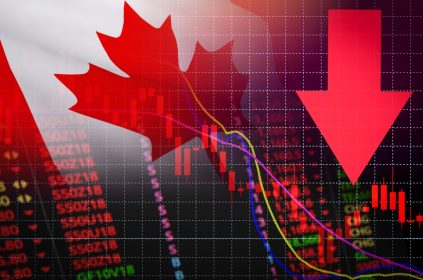Trump told reporters at the White House that there was nothing Canada could do to stop the tariffs, which he says are necessary to address longstanding trade imbalances.
“The tariffs, you know, they’re are all set. They go into effect tomorrow,” Trump said. “No room left for Mexico or for Canada.”
The measures include a 25% tariff on all Canadian imports and a 10% levy on energy products.
The tariffs, which had been delayed after Canada and Mexico agreed to introduce new security measures at the border, were initially tied to the illegal flow of people and drugs. The delay, Trump said, had allowed time for an “economic deal,” but it remains unclear what he expects from Canada in exchange for removing the tariff threat permanently.
Canada’s 5-year bond yield dropped 8 basis points (bps) on the news, reaching a new 3-year low of 2.52%.
Following the drop in Canada’s 5-year bond yield, markets saw a broad selloff. The TSX fell 1.54% (-391 pts), while the Dow dropped 1.48% (-649 pts). The Canadian dollar also weakened 0.26% to 0.6906 against the U.S. dollar.
Attention is also turning to the Bank of Canada‘s upcoming rate decision next week. Bond markets are now suggesting a greater than 70% probability of a 25-bps rate cut at the March 12 meeting.
Canada vows retaliation
In response to the tariffs, Ottawa has promised swift countermeasures. Officials say Canada will impose retaliatory tariffs on U.S. goods, mirroring past disputes that saw billions in duties on American steel, aluminum, and consumer products. The federal government is expected to outline its response in the coming days.
Foreign Affairs Minister Mélanie Joly confirmed that if the levies go into force, Ottawa will revive its previously announced retaliatory plan, starting with a 25% tariff on $30 billion worth of U.S. products, followed by duties on another $125 billion in goods three weeks later.
Ontario Premier Doug Ford has also spoken out, vowing to defend the province’s manufacturing sector.
“If they want to try to annihilate Ontario, I will do anything — including cutting off their energy — with a smile on my face,” Ford said. “They need to feel the pain. They want to come at us? We’ve got to go back twice as hard.”
The impact of a prolonged trade war between the two countries could be severe.
According to CIBC, if the tariffs remain in place long term, Canada’s GDP could contract by 2-5%, with up to 350,000 job losses—a blow that would hit Ontario and Quebec the hardest due to their heavy reliance on manufacturing and resource exports.
The tariffs pose a “clearly negative” downside risk for Canada, adds BMO, which sees 2025 GDP growth falling by nearly 2 percentage points.
“A couple of quarterly contractions are likely for Canada, i.e., a moderate recession, before growth gradually resumes,” the bank’s forecast reads. “Counter tariffs and a weaker currency could see inflation spike more in Canada (by just under a percentage point) than in the U.S., before fading as the economy weakens.”
Inflation risks and the Fed’s next move
Beyond the economic fallout in Canada, inflationary pressures are mounting in the U.S., raising questions about the Federal Reserve’s ability to continue cutting rates.
According to National Bank economist Jocelyn Paquet, the tariffs on China, Canada, and Mexico have “the potential to accelerate a rebound in goods inflation that is already underway.”

He pointed out that the threat of tariffs alone has already had an impact on the manufacturing sector, with companies rushing to move forward shipments before the tariffs take effect.
“This race against time is putting pressure on supply chains and is already leading to price increases, as evidenced by the prices paid sub-index of the ISM manufacturing report,” he noted. “While it’s too early for the Fed to call an end to its easing cycle, these data should nonetheless encourage it to exercise caution.”
cibc Donald Trump Doug Ford economic news retaliatory trade measures tariffs trade war Trump tariffs
Last modified: March 4, 2025











